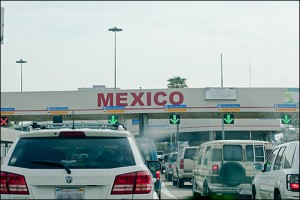By Andy Porras
La Prensa San Diego
any are those who know that it was Mexican president, Vicente Guerrero, who said,”Mi patria es primero – my motherland comes first,” – but few realize the man who abolished slavery in 1829 was of African heritage.
Before you launch a Jalisco tantrum, observe these facts from historian Herman Bennett’s eye-opening book, Africans in Colonial Mexico: many of the first African slaves who arrived in the New World, before 1620 (date of the Mayflower landing here), arrived in Mexico. Bennett also states that by the early 1600s, the number of Africans “collectively rivaled, if not outnumbered, Spaniards throughout New Spain (Mexico) . . . at Veracruz, persons of African descent constituted 63 percent of the nonindigenous population.”
As America prepares to honor its African legacy this month, let us enrich our own culture by looking to the motherland for Black History there. It’d be redundant to state that the prominent role Africans played in Mexican history is often ignored, under appreciated and has only been flimsily acknowledged in recent years.
You see, the majority of Mexicans, indoctrinated through a Eurocentric system of education ( much like our own), almost never heard of “the third root” of culture that blended with their Spanish and indigenous heritage.The more you look a this historical image, the easier it becomes to realize how African influence significantly enriched Mexican culture through art, music, language, cuisine, and dance.
Guerrero, a gallant Mexican Revolutionary War general, became Mexico’s second president following the toppling of the Spanish. His family was from Tixtla, a town 100 kilometers inland from Acapulco, a key port of entry for slave ships and consequently having a large African population.
During Mexico’s War of Independence, however, his father Pedro supported Spanish rule and asked him for his sword in order to present it to the viceroy of New Spain as a sign of goodwill and surrender, Vicente refused, saying, “The will of my father is for me sacred, but my Motherland is first.” His famous quote became the motto of the southern Mexican state of Guerrero, named later in his honor.
Then there is Gaspar Yanga, said to have been a member of a royal family from a country in west-central Africa. He was captured by the Spaniards and taken to what is now the state of Veracruz, as a slave to work on sugar plantations during the Spanish colonial rule. Much like American slave masters, the captured Africans were chained to prevent them from running away. That didn’t stop Yanga, however, and he led a revolt in the sugar fields in 1570 and later fled into the lowlands of Veracruz where he founded a community of Black and indigenous ex-slaves.
So proud were the former slaves of their fearless leader, that they called themselves, “Yangans.”
Eventually, their hidden village grew to more than 500 inhabitants. And while their resources were limited Yanga often raided Spanish caravans for food and supplies, much to the delight and approval of his followers.
Meanwhile, the Yangans were…
Finish reading Something La Raza can Learn During Black History Month





